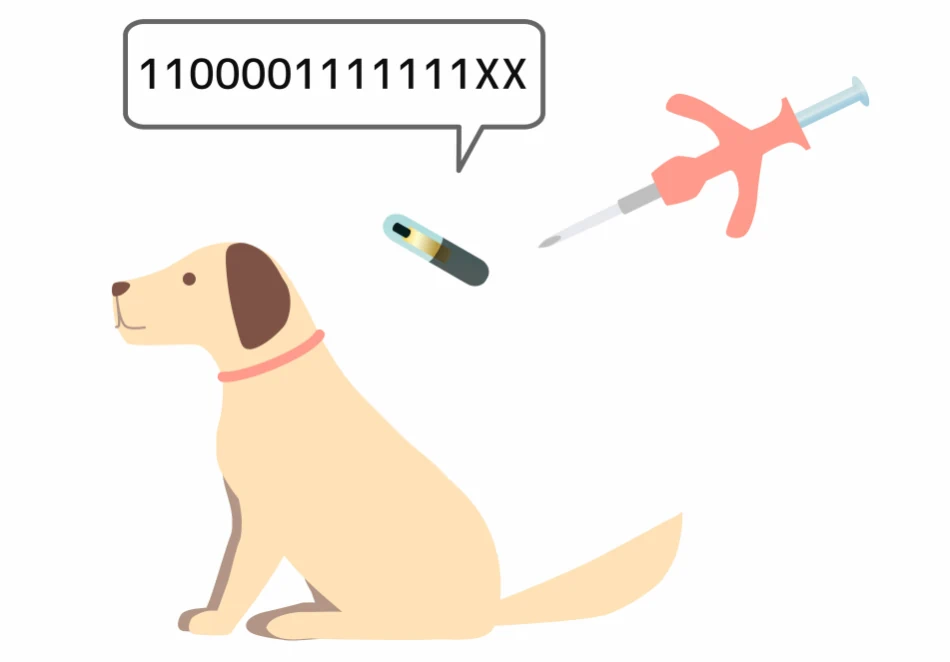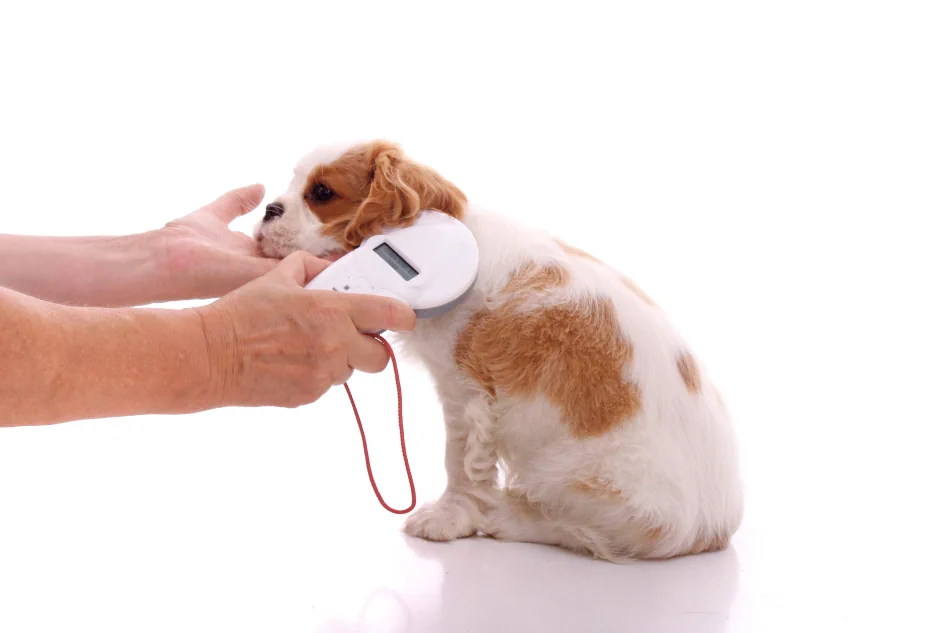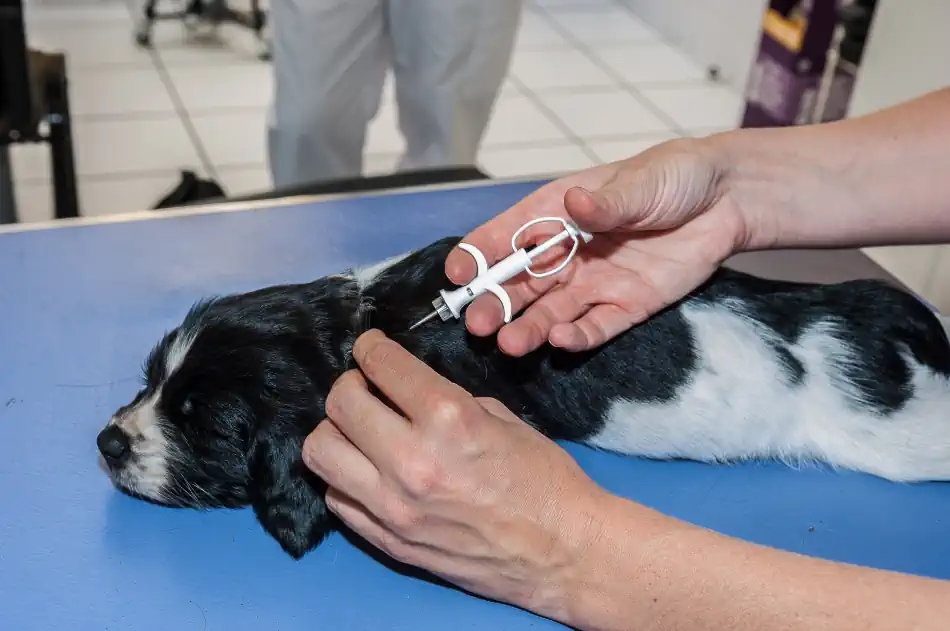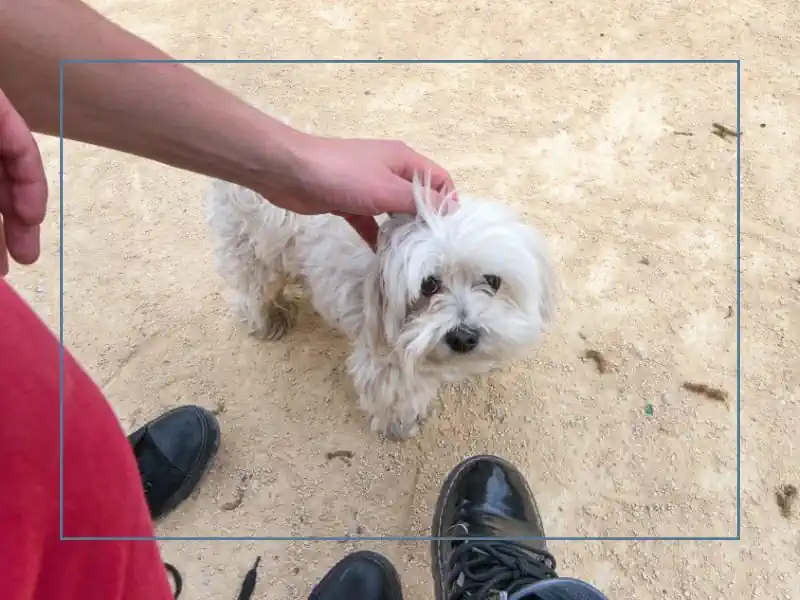What Is the Purpose of Microchipping a Dog
By Everything Shih Tzu August 12, 2022
This post may contain affiliate links. Read privacy & disclosure policy for info
Nearly 40% of dogs that are in a shelter or get lost will not be able to find their way back home again. That's because many dogs that end up in shelters are unidentifiable.
They don't have microchips, tattoos, or tags to let people know who they belong to.

It is estimated that roughly 3.9 million dogs go missing every year in the United States alone.
Sadly, around one-third of them will never be found, and almost half will return home on their own after some time away.
The purpose of microchipping a dog is to provide a permanent form of identification in case the dog is lost or stolen. If a dog is found by someone who takes it to a vet or animal shelter, that facility can scan for a microchip to try and find the owner.
Of course, if your dog ever finds themselves lost, you would want them to have the best possible chance of being found and returned to you as quickly as possible.
Microchipping your dog can help with this process significantly, so read on to discover how microchipping a dog works!
How Does Microchipping a Dog Work?

Microchipping is a quick and easy way to identify your dog.
A microchip is a radio frequency identification tag (RFID) that can only transmit information when a specific microchipping reader device scans the implantation area under the dog's skin.
Microchips do not contain any batteries and are very small.
Each microchip has a unique identification number registered to the owner's name and address.
If your dog is found and brought to a veterinarian or animal shelter, they can scan the microchip to find out how to contact you.
Generally, people will often put their pets' names and phone numbers on collars and tags to identify them, and that's all they may ever need.
However, when a dog becomes lost, it is not uncommon for them to become separated from their collars or ID tags, so finding where they came from will be more challenging.
In addition, some may decide to have their dogs tattooed to identify them, but this can sometimes be difficult as the animal ages due to the ability of the ink to fade over time.
Still, with technological advances, microchips have become standard practice offered by many veterinarian offices and animal shelters over the years.
Read our article "Pros and Cons of Microchipping a Dog" before deciding to get your dog chipped
Where Is the Microchip Implanted? Will it Hurt My Dog?

One reason a pet owner may be hesitant to get their dog microchipped is that microchips have to be implanted inside your dog, and while it can seem frightening, it is a relatively simple process.
Microchips are about the size of a grain of rice, then loaded into an application device or syringe and inserted into the dog's subcutaneous tissue.
The microchip itself doesn't hurt the dog.
Any pain or discomfort felt by the dog is generally from the initial injection, whereas the injection syringe is a little bigger than those typically used for injection.
For dogs, the microchip is typically implanted in the area between the shoulder blades and along the spine.
Your dog will not be required to be unconscious for this procedure but will have to be either standing up or on its side.
After insertion, the microchipped is scanned to ensure it is working correctly.
A concern for many owners is the pain associated with microchip implantation.
Fortunately, microchipping is a fast and relatively pain-free process, so while your dog might be uncomfortable, they should be fine!
Getting Your Microchipped Dog Registered
Although it may be a common practice, microchipping animals is a relatively new technology.
Avid Identification Systems invented the first microchip system used to identify animals in the late 1980s.
Over the years, many others have followed suit with their own microchips, such as resQ and HomeAgain.
The microchip operates on a radio frequency that carries its own personal identification number.
When your vet scans the microchip, the number is transmitted, then identified by the corresponding transponder.
The microchip does not require any outside power sources, and no, you will not have to "charge" it.
While getting the actual chip implanted in your dog is an excellent first step, arguably the most crucial part of this process is the act of registering the microchip.
Without registering your dog's microchip, your dog will not be traced back to you.
Let's use a real-world example.
You have just taken your dog to get microchipped at your veterinarian's office.
You have your dog microchipped, but you forget to register them with a recovery database.
Unfortunately, your dog gets out of your backyard fence a few weeks later.
A good Samaritan comes across your dog a week later and takes them to a shelter only to find out that while the dog has a microchip, it isn't registered to anyone.
Microchip registration rates are only 6 out of 10. That's pretty alarming. It kind of defeats the purpose of microchipping, doesn't it?
Having your dog microchipped is an extra step to ensure that if your dog ever gets lost, you will have a better chance of being reunited with them, but if the chip is not registered, your chances of being reunited with your dog are slim.
According to the American Kennel Club, those whose pets have microchips are 20 times more likely to be returned to their owner.
Because of this, registering your dog with a database as soon as they are microchipped is essential.
Your veterinarian can give you further information on where to register your dog, but just in case, here are a few databases you can register your dog's microchip with:
- Home Again (www.homeagain.com)
- AKC Reunite (www.akcreunite.org)
- 24 Pet Watch (www.24petwatch.com)
- Smart Tag (www.idtag.com)
- AVID Friend Chip (avidid.com)
- Free Pet Registry (www.freepetregistry.com)
Each registry is different, and they may have different fees associated with registering your dog.
It might also be a good idea to check with your local humane society or the county you live in.
Many counties offer to register your animal's microchip for free in a local and national database.
They may also offer to microchip your animal for a discounted rate if you're low income or live within county limits.
When you register your dog, you will enter your information, which becomes permanently stored and documented!
However, you do want to make sure to periodically check whatever database you have your dog's microchip registered to verify the information is still current.
And be sure your details, such as your phone number, are updated whenever any information changes so that you can be reached in the event your dog goes missing.
Can I Track My Dog With A Microchip?
Microchips cannot track your dog or tell you their location if they become lost. What they can do is allow your dog to be identified.
The microchip's purpose is to serve as a permanent ID for a lost or stolen dog. In addition, the chip enables a veterinarian or shelter where the dog shows up to scan for its information, and if registered, they can contact the owners.
It sort of works like a barcode, similar to how you might scan an item in a grocery store. Once you scan the item, it identifies it to the computer, with the price and item information.
There are companies that make GPS trackers in the form of ID tags or collars, but there is no way to track your dog with only a microchip.
Microchips are a passive tracker, meaning it will only be activated if scanned, and you can only see where it has been (the vet or shelter that has scanned them) and not where it currently is.
If your dog does become lost, make sure you are implementing other methods like missing posters or contacting vet offices or shelters in the case that the microchip has not been scanned.
Final thoughts
There are a couple of reasons why people might choose to microchip their dogs.
For one, it can be a way to help ensure that your pet can be returned to you if they ever become lost or stolen.
Microchips are typically implanted just under the skin; each has a unique ID number that a specific scanner can read.
If your dog is found by someone who takes them to a vet or animal shelter, that facility will likely scan for a microchip to find the owner.
Microchipping your dog can also prove useful if your dog needs surgery or another medical procedure in the future. A microchip can be used to identify them quickly and easily.
This is especially important if your dog has no other form of identification, such as a collar with your contact information that may have gone missing.
In contrast to tags or collars, microchips serve as a more permanent means of identification.
This doesn't mean that your cute and colorful collars are rendered useless, but it does serve as an extra protection for your dog if they go missing and lose their collar; there is another method to identify you as their owner.
Microchips are a harmless procedure that is quick and efficient and have become pretty standard since their inception in the late 80s.
If you are interested in microchipping your dog, check within your community to see if there are affordable options to get a microchip for your pet.
While microchips can be effective in reuniting lost animals with their owners, they cannot act as GPS trackers.
They are only activated when the transponder scans them.
Registering your dog's microchip is essential because without it, whatever shelter comes across your dog's path won't be able to locate you.
While microchipping animals is becoming more and more commonplace, you know your dog the best, and knowing the purpose behind microchips will be the best way to make an informed decision for your furry kid.
References: Shelter Animals Count, American Humane Society, Dog Population & Dog Sheltering Trends in the United States of America - PMC (nih.gov)



